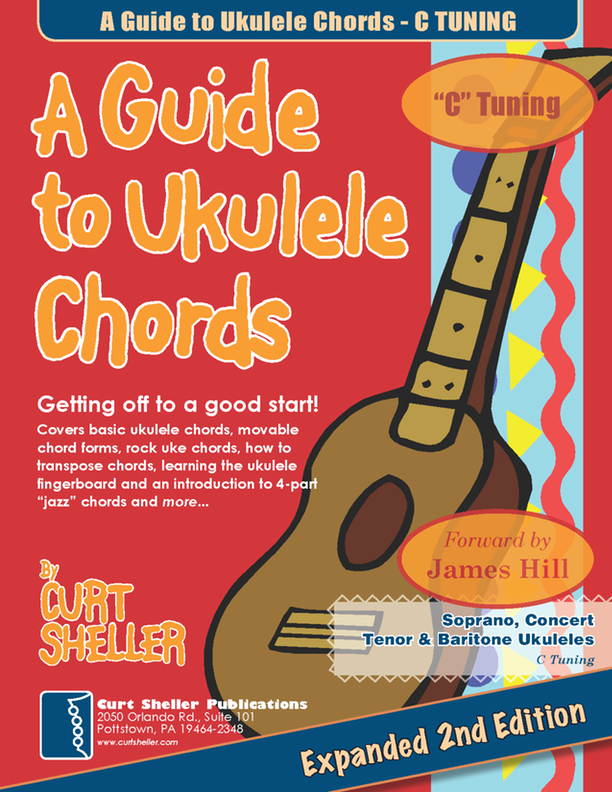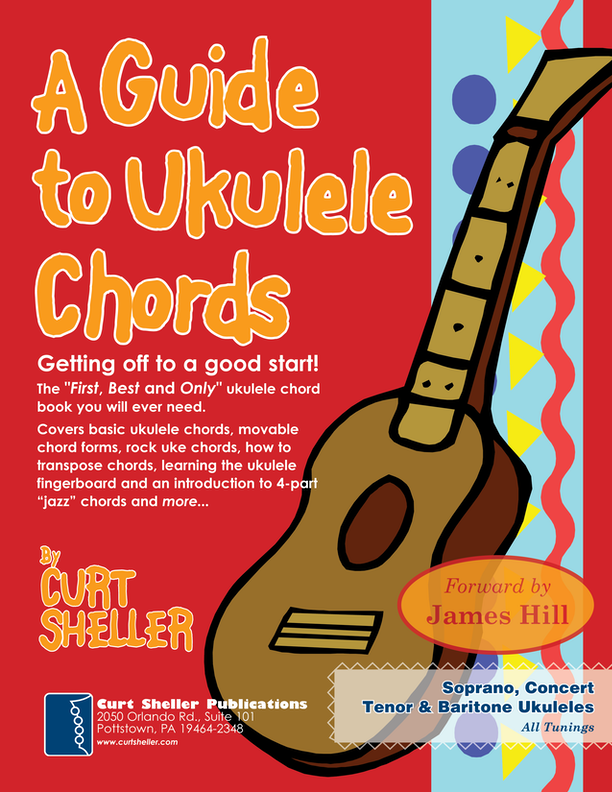Learn a new Ukulele chord every day of the year. The chord for March 1st is Bb. For transposition purposes today's the root on string one or four can be used. This is where really and I mean really knowing the notes of the ukulele fingerboard really pay off.
Learn a new Ukulele chord every day of the year. The chord for March 1st is Bb.
The Chord a Day for March dives into Movable Form chords. These chords are based on open positions chords and do not contain any open strings — allowing for ease of transposing to other keys up and down the ukulele fingerboard. This starts you life and journey beyond the third fret.
With the Key of F being a popular ukulele key. Bb is Most likely the first movable, barre
chord one learns on the ukulele.
For transposition purposes today's chord, Bb has a root on string one and string four. This is where you really, and I mean really knowing the notes of the ukulele fingerboard finally pays off.
Movable Form Chords
Today's chord, Bb, is a Movable Form Chord based off the Open Position A.
Any chord chord can be transposed along the fingerboard.
Movable Ukulele Chords Lesson Series page.

 Understanding a Chord Diagram
Understanding a Chord Diagram

Gvariations
Additional Information
Bb is a movable version of the open position A with the root on string one and string four. I've only shown the root on string one. You can uses either root for transposition purposes.
 Although additional fingerings are possible for many chords, fingering for any given chord depends on the science of how our fingers work and on the harmonic context the chord is being used in—what was the previous chord, and what's the next chord? The goal is to play all the notes right behind the frets when possible. Remember, longer fingers can reach the lower strings better, and finger two can stack on finger three, and finger three can stack on finger four.
Although additional fingerings are possible for many chords, fingering for any given chord depends on the science of how our fingers work and on the harmonic context the chord is being used in—what was the previous chord, and what's the next chord? The goal is to play all the notes right behind the frets when possible. Remember, longer fingers can reach the lower strings better, and finger two can stack on finger three, and finger three can stack on finger four.A barre across strings one and two is the most efficient finger for this chord. DO NOT barre more strings than necessary unless there's an overwhelming musical reason for the barre. An example when quickly switching between todays chords and tomorrow's Bb7 in a very fast rhythmic pattern.

Related Lessons, Videos, Lesson Series, Songs, Books & Reference Charts, Resources & Assets, Workshops are below.

Covering basic ukulele chords that ALL uke players MUST know, movable chord forms, rock uke chords, how to transpose chords, learning the ukulele fingerboard and an introduction to 4-part jazz chords and more... FOR LEFTIES - Tunings: C, G, or D Tunings. Low or high string four variations.

A Guide to Ukulele Chords, Second Edition is designed as a guide to ukulele chords. Covering the basic ukulele chords that ALL ukulele players SHOULD know. A Guide to Ukulele Chords covers movable chord forms, rock chords, how to transpose chords, learning the ukulele fingerboard and includes an introduction to 4-part, a.k.a jazz chords and more...


return in your investment)—it is this— learning the
f*ckingnotes of your OWN instrument. Sorry for the tough talks—but it is sooooo true!


Learn to read single note melodies in the first/open position is a lot easier than you might think. Book: Ukulele – Reading Music Series – Primer

An organized collection of daily practice and reference material for the contemporary ukulele player for developing the vocabulary and knowledge necessary for single note playing. Book: Daily Practice Material for the Contemporary Ukulele
Checkout the Books & Reference Charts for additional Handy, Dandy Reference Charts.

Ukulele Fingerboard Chart for C Tuning, Low or High G – G C E A

Ukulele Fingerboard Chart for G Tuning, Low or High A – D G B E

A handy reference chart of all 15 major and relative minor key signatures. US Letter 8.5 x 11 sized (ANSI-A) , A4









.jpg)